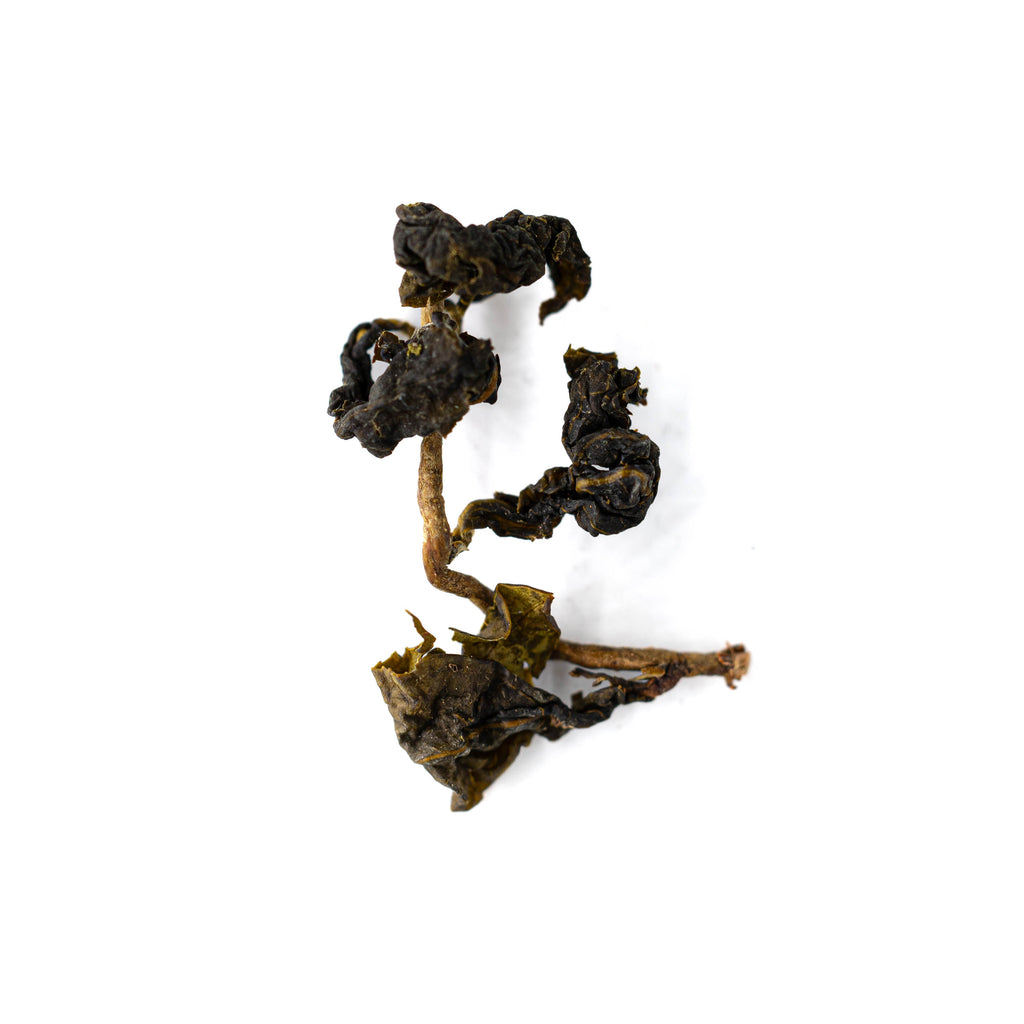Qing Xin Ruan Zhi

Qing Xin Ruan Zhi (青心软枝)
Qing Xin Ruan Zhi is the tea varietal most commonly used for Taiwan Wulong teas, loved for its delicate profile.
Name
- 青 (pronounced Qing in Mandarin): means green.
- 心 (pronounced Xin in Mandarin): means heart.
- 软 (pronounced Ruan in Mandarin): means soft.
-
枝 (pronounced Zhi in Mandarin): means stem.
Together, 青心软枝 (Qing Xin Ruan Zhi) means Green Heart, Soft Stem. The name refers to the green-colored inner buds and pliable stem, features that distinguish it from varietals with thicker branches in the area.
Taiwan
Ball-rolled Qing Xin Ruan Zhi grown at high elevation is the most common style, but Qing Xin’s aromatic complexity also lends itself to strip-style Baozhong and bug-bitten oxidized teas like Dongfang Meiren.
Some believe Qing Xin Ruan Zhi to be a cutting from the Ai Jiao (矮脚) cultivar that grows in Fujian Province, placing it in the broader family of Fujian wulong cultivars, such as Tieguanyin (Anxi) and the rock teas (yancha) of Wuyishan. However, I have not found any published genetic studies that confirm this connection.
According to Taiwan local lore, a man named Lin Fengchi (林鳳池), who was born near Lugu in 1819, went to Fujian to study and brought back 36 tea plants with him. The first 24, planted at Daping, did not survive. The remaining 12 were planted around Nantou, giving rise to what is now recognized as the Qing Xin Ruan Zhi cultivar.
Today, the Qing Xin Ruan Zhi varietal is facing challenges.It is susceptible to disease and vulnerable to swings in weather conditions. Researchers are developing new cultivars that use Qing Xin as a parent. One result of this is Ying Xiang (迎香), a hybrid that uses genetic material from Jin Xuan and Qing Xin Ruan Zhi.
Other Regions
-
Fujian, Mainland China: You can still find Ai Jiao (矮脚) tea cultivated in Fujian today, particularly in the Wuyishan area. While Qing Xin Ruan Zhi may share lineage with these plants, I have seen no evidence of a reverse transfer of the Taiwan-localized leaves back into Fujian.
-
Yunnan, Mainland China: In Yunnan, several farmers have adopted Qing Xin Ruan Zhi and produce it using Taiwan-style processing. Rather than imitating Puer, they focus on heavily roasted, ball-rolled wulong.
- Thailand & Vietnam: Both Thailand and Vietnam cultivate Qing Xin Ruan Zhi extensively. A large amount of this tea is imported into Taiwan, where it is often used in lower-cost blends, bottled, and ready-to-drink teas — though, it is not always clearly labeled as such.
